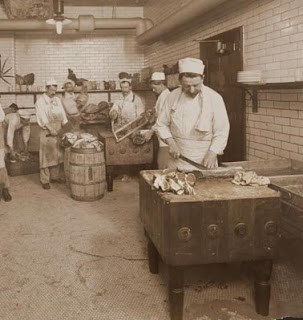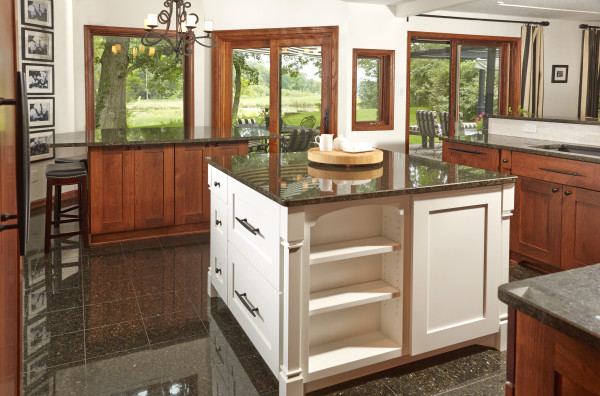A necessity for the butcher shop, wood was probably one of the earliest and most enduring choices for residential countertop material as well (WAY back in the day). It is renewable (can be sanded and re-finished), can be cut on directly (though some people keep a separate cutting board or block), and is an easily obtained, abundant, and renewable natural resource. So why don’t you see wood countertops in many homes today? The main reason is that laminate, granite, and quartz have edged out the sometimes less pristine-looking wood. These other materials are more durable and, overall, more popular today than wood tops. But more and more, high-end wood tops are seen on islands as a design component, and even in sink areas where they will be exposed to a lot of moisture. Why is wood starting to make a comeback as a countertop choice? For one thing, it is a warm and inviting material in contrast to the cold, hard feel of stone countertops. It is a renewable resource, which is important for our planet. And it offers many options for unique designs, with a great variety of wood species, colors, plank widths, inlays, and edges. Tigerwood, Black Walnut, Bamboo, Maple, Mahogany, Wenge, Zebrawood, Beech, Hickory, and Cherry are all used as countertop material. They can be finished with a durable non-toxic finish material or they can retain a “living finish” that only needs a food-safe mineral oil applied several times per year to protect it. Even with a durable finish, water puddles should be wiped up right away.
Using wood countertops in specific areas of the kitchen, such as a bar top, an island top, a desktop, or a baking area can not only enhance the design of the kitchen, it can add a warmth and beauty that’s unique to wood alone. Consider adding some wood countertops to your next kitchen project!


